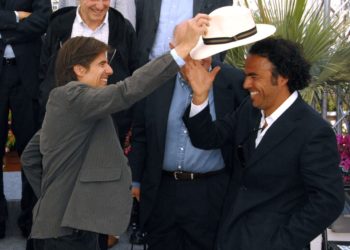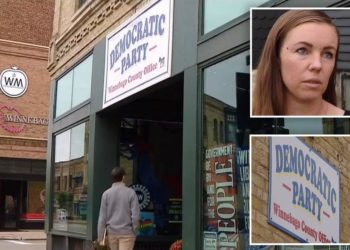When D’Angelo wrapped up his debut LP, “Brown Sugar,” he was proud of the results. But one thing about the 1995 album bothered him: It sounded a bit too smooth. In the transition from his home demos to the studio, some of the material, he later said in an conversation with Red Bull Music Academy, “got a little homogenized.”
For his next project, his goal was to funnel his creativity, “straight from the cow to the glass.”
If “Brown Sugar” put D’Angelo on the map, “Voodoo,” which arrived in January 2000, solidified his legacy as a generational musical force — a singer, multi-instrumentalist and songwriter who spearheaded an earthy yet state-of-the-art fusion of gospel feeling, R&B yearning, jazz spontaneity and head-nodding hip-hop groove.
The key was a freewheeling studio atmosphere cultivated by a group of musicians who called themselves the Soulquarians. The name was a reference to the Aquarius birth sign of all four founders: D’Angelo; the Roots drummer Questlove; the producer, multi-instrumentalist and songwriter James Poyser; and the rapper-producer J Dilla.
From 1996 through 2002, this core group and various associates — including Common, Erykah Badu, A Tribe Called Quest’s Q-Tip and the jazz trumpeter Roy Hargrove — took up residency at Electric Lady Studios in Greenwich Village. Hugely inspired by Jimi Hendrix, who commissioned the facility, D’Angelo insisted on focusing the group’s energy at the building.
“He just knew that place was so blessed,” Questlove later recalled in a Red Bull Music Academy interview. “He said, ‘Yo, man. It has the blessings of the spirits. We have to go there. It’s only right.’”
The “Voodoo” sessions, which overlapped with and bled into the recording of Common’s “Like Water for Chocolate” and Badu’s “Mama’s Gun” — both also recognized as classics of the era — took the form of sprawling jams, often directly informed by close study of so-called treats, the collective’s term for rare live recordings by their musical idols, including James Brown, Prince, George Clinton, Sly Stone, Michael Jackson and Fela Kuti.
“We got bootleg concert connects like fiends got drug dealer connects,” Questlove told Rolling Stone. “During ‘Voodoo,’ there was at least 13 people providing us with stuff.”
Questlove would keep daytime studio hours with Common, but for D’Angelo, a typical session would start around 6 p.m. when the artist would arrive fresh from the gym. After a high-protein, low-carb snack, he and Questlove would spend a couple of hours viewing treats on a VCR set up in the break room, then head into Studio A to begin jamming. As D’Angelo later recalled, he and Questlove would spend hours playing around “like kids,” reveling in musical spontaneity, while the engineer Russ Elevado captured every note.
“We would just keep the tape rolling, and we’d be in that live room with absolutely, really no intent of writing or recording anything,” D’Angelo said. Tape would be rolling when Questlove might say, “‘Whoa! What’s that? Yo, Russ! Rewind the tape.’ Russ Elevado would rewind it and listen to it again and boom, there’s a new song.”
The jams grew to include other ace players including Pino Palladino, a seasoned Welsh session bassist whose résumé included work with Elton John, Don Henley and Phil Collins, and the virtuosic jazz and funk guitarist Charlie Hunter.
Given the amount of fruitful musical activity occurring at Electric Lady, Questlove and other musicians were reluctant to leave. “Sometimes I would go home and then D would call me and say, ‘Yo. You have to listen to what Charlie and I did last night,’” the drummer later recalled. “He would play me something, and I would be seething with jealousy because I wasn’t there for the magic.”
While absorbing lessons from their forefathers, D’Angelo, Questlove and Co. were also paying close attention to their contemporaries, including J Dilla, who specialized in tracks with a particularly slippery, stumbling rhythmic feel that the drummer would later describe as “drunken.” In honing the sound of “Voodoo,” D’Angelo was looking to tap into this aesthetic, which he had been using in his own demos.
The collective’s calculated blend of spontaneity and tightness yielded brilliant results. Tracks like “Chicken Grease” — which D’Angelo nabbed from Common’s album, telling Questlove, “you know and I know that funk belong to me” — and the opener “Playa Playa” seemed to tap into an eternal groove, still retaining the essence of the marathon jams that birthed them. “Send It On,” “Feel Like Makin’ Love” and “Untitled (How Does It Feel)” updated the classic R&B slow jam for the new millennium.
Beyond its sonic marvels, “Voodoo” recentered D’Angelo as an artist, and its uniquely intuitive exploratory genesis served as a bridge back to his initial creative spark.
“It was a return to what we love about music,” he told Rolling Stone. “After ‘Brown Sugar,’ I lost my enthusiasm to do all this,” he said, describing fans swarming him for autographs at 7-Eleven. “I had to reiterate why I was doin’ that in the first place,” he added, “and the reason was the love for the music.”
The post How D’Angelo Made His Masterpiece, ‘Voodoo’ appeared first on New York Times.




